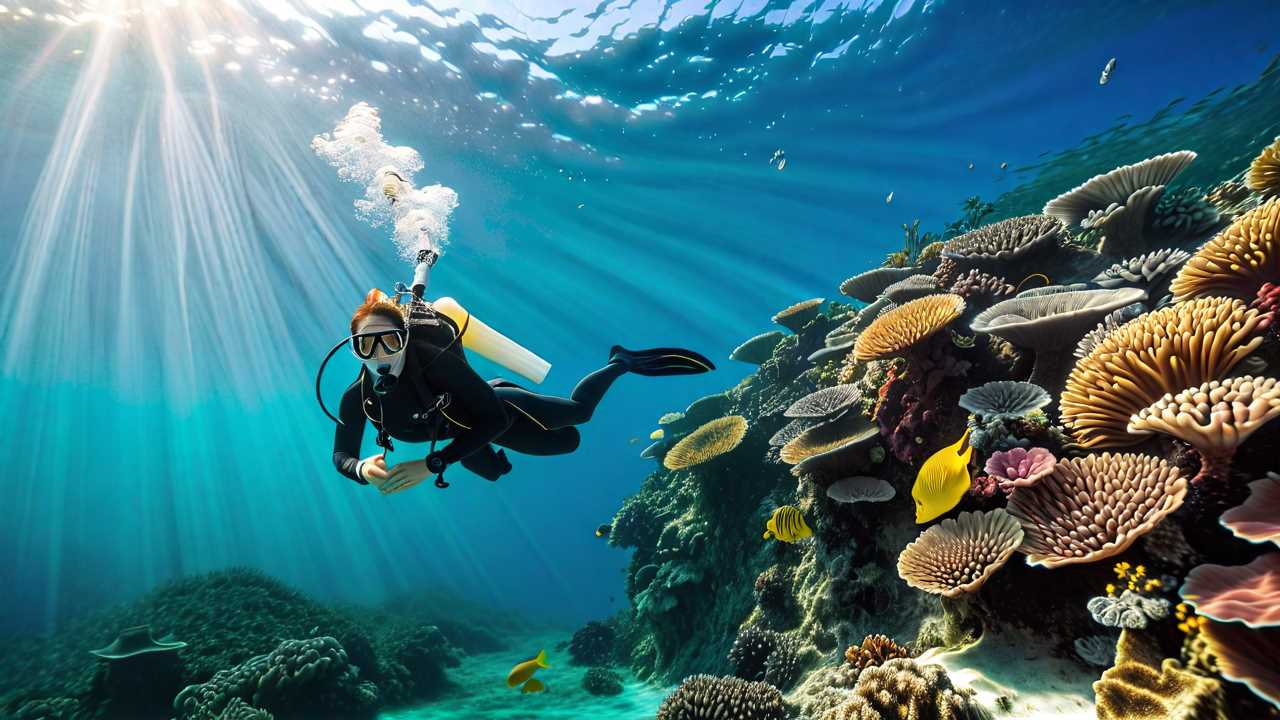Travel
How to Choose Underwater Photography Gear for Snorkeling?

When it comes to capturing the breathtaking beauty of the underwater world during a snorkeling adventure, selecting the right photography gear is paramount. The vibrant marine life, the play of light through water, and the serene beauty of the underwater landscape offer a unique photographic opportunity. However, the challenge of selecting the right equipment can often seem overwhelming. In this comprehensive guide, we will walk you through the essential considerations and tips for choosing the best underwater photography gear for snorkeling, ensuring you are well-equipped to freeze those magical moments beneath the waves.
Understanding the Basics of Underwater Photography Gear
Before diving into the specifics, it’s crucial to grasp the basics of underwater photography equipment. At its core, underwater photography gear consists of a camera, a waterproof housing, and often, additional lighting. The choice of camera can range from action cameras, compact cameras, to DSLRs and mirrorless systems, each offering different levels of control, quality, and investment. Waterproof housings are critical, as they protect your camera from water and pressure. Lighting, such as strobes or underwater video lights, is essential for illuminating the often dim underwater scenes and bringing out the vibrant colors of marine life.
Selecting the Right Camera for Snorkeling Photography
The selection of the camera is your first step in assembling your snorkeling photography kit. For beginners and those who prefer simplicity, action cameras like the GoPro offer a robust, user-friendly option that can capture both photos and videos with ease. These cameras are inherently waterproof and compact, making them ideal for snorkeling.
For those seeking higher image quality and more control over settings, compact cameras with underwater housings are a great choice. Many models designed specifically for underwater use offer manual controls, RAW image capture, and excellent image quality, without the bulk and complexity of DSLRs or mirrorless cameras.
Advanced photographers might opt for a DSLR or mirrorless camera housed in a dedicated waterproof case. These setups offer the ultimate in image quality and control, allowing for the use of various lenses and advanced photographic techniques. However, they represent a significant investment and require a deeper understanding of photography principles.
Choosing the Right Housing for Your Camera
The housing is what keeps your camera dry and operable underwater. When choosing a housing, ensure it is compatible with your camera model and allows access to the necessary controls. Basic housings are perfect for shallow snorkeling, but if you plan to dive deeper, even just occasionally, consider a housing rated for greater depths.
Polycarbonate housings are lightweight and more affordable, while aluminum housings offer superior durability and control access. Check for a housing with a good ergonomic design, as this will greatly enhance your shooting experience underwater.
Importance of Lighting in Underwater Photography
Underwater, light behaves differently, with water absorbing colors and reducing visibility. This makes external lighting not just beneficial but often necessary to capture the true colors of the underwater world. For snorkeling photography, compact underwater video lights or strobes can significantly improve your images. Look for lights that offer adjustable output and, if possible, a wide beam to evenly illuminate your subjects.
Additional Accessories for Underwater Photography
Beyond the camera, housing, and lights, several accessories can enhance your underwater photography experience. A sturdy tray and handle setup can improve the stability of your shots, while red filters can help correct the blue cast that dominates underwater photos, especially in deeper or clearer waters.
For macro photography enthusiasts, close-up lenses can be attached to some camera housings to allow for detailed shots of small marine life. And don’t forget about maintenance tools and moisture-absorbent packets to keep your gear in top condition.
Practical Tips for Successful Underwater Photography
1. Practice: Before heading out, familiarize yourself with your gear and practice in a controlled environment like a swimming pool. This will help you understand how your equipment behaves underwater and how to manage settings and lighting.
2. Buoyancy Control: Good buoyancy control is essential for underwater photography. It helps you maintain a steady position and avoid disturbing marine life or the underwater environment.
3. Get Close: Water reduces clarity and color. To capture vibrant and sharp images, get as close to your subject as safely possible.
4. Shoot Upwards: Shooting towards the surface can create a beautiful contrast between your subject and the lighter water above, adding depth and drama to your photos.
5. Be Patient: Underwater photography requires patience. Take your time to observe your surroundings and wait for the perfect moment to capture your shot.
Conclusion
Choosing the right underwater photography gear for snorkeling is a journey that blends personal preference with practical considerations. By understanding the basics of underwater photography equipment, selecting the right camera and housing, incorporating essential lighting, and applying practical shooting tips, you are well on your way to capturing the underwater world’s mesmerizing beauty. Remember, the best gear is the gear that suits your needs, helps you capture the moments you cherish, and brings you joy in the process. Happy snorkeling and shooting!

Hey there! I’m William Cooper, your go-to guy for all things travel at iMagazineDaily. I’m 39, living the dream in Oshkosh, WI, and I can’t get enough of exploring every corner of this amazing world. I’ve got this awesome gig where I blog about my travel escapades, and let me tell you, it’s never a dull moment! When I’m not busy typing away or editing some cool content, I’m out there in the city, living it up and tasting every crazy delicious thing I can find. Join me on this wild ride of adventures and stories, right here at iMagazineDaily. Trust me, it’s going to be a blast! 🌍✈️🍴






